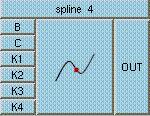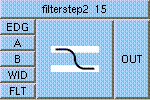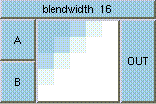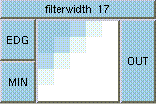MIX

Click box to see full description
A linear interpolation between two values, A and B, based on X. The data type returned will be the same as the two input values. The result is calculated by (1-X)*A + X*B; For best results, the mixing value, X should lie in the range [0,1]. refer to page 331 in the RenderMan Companion.














